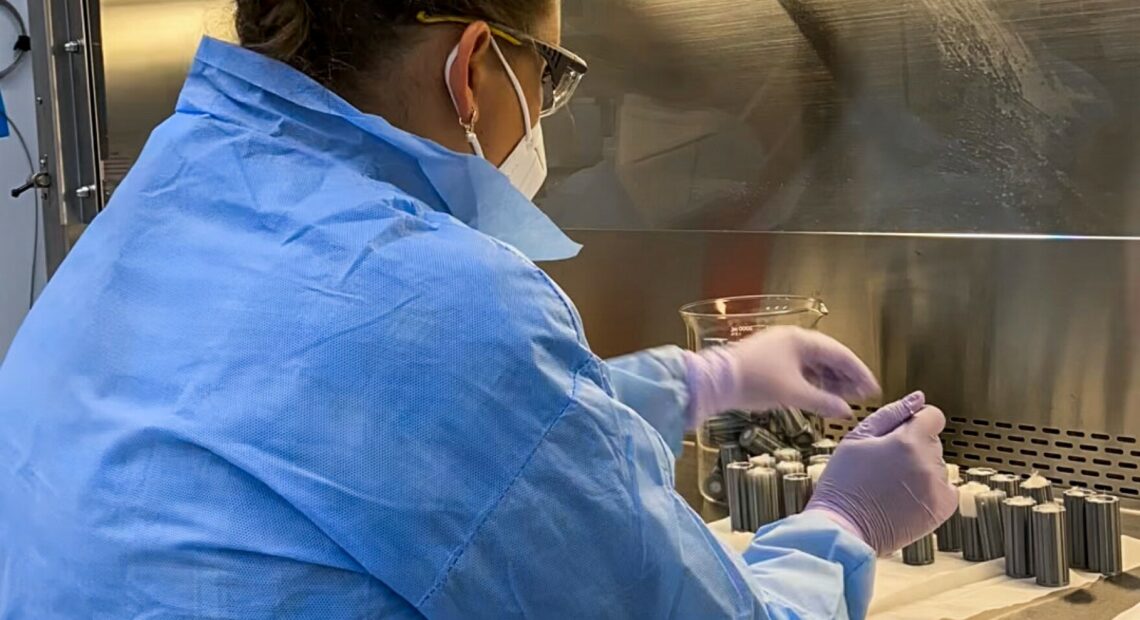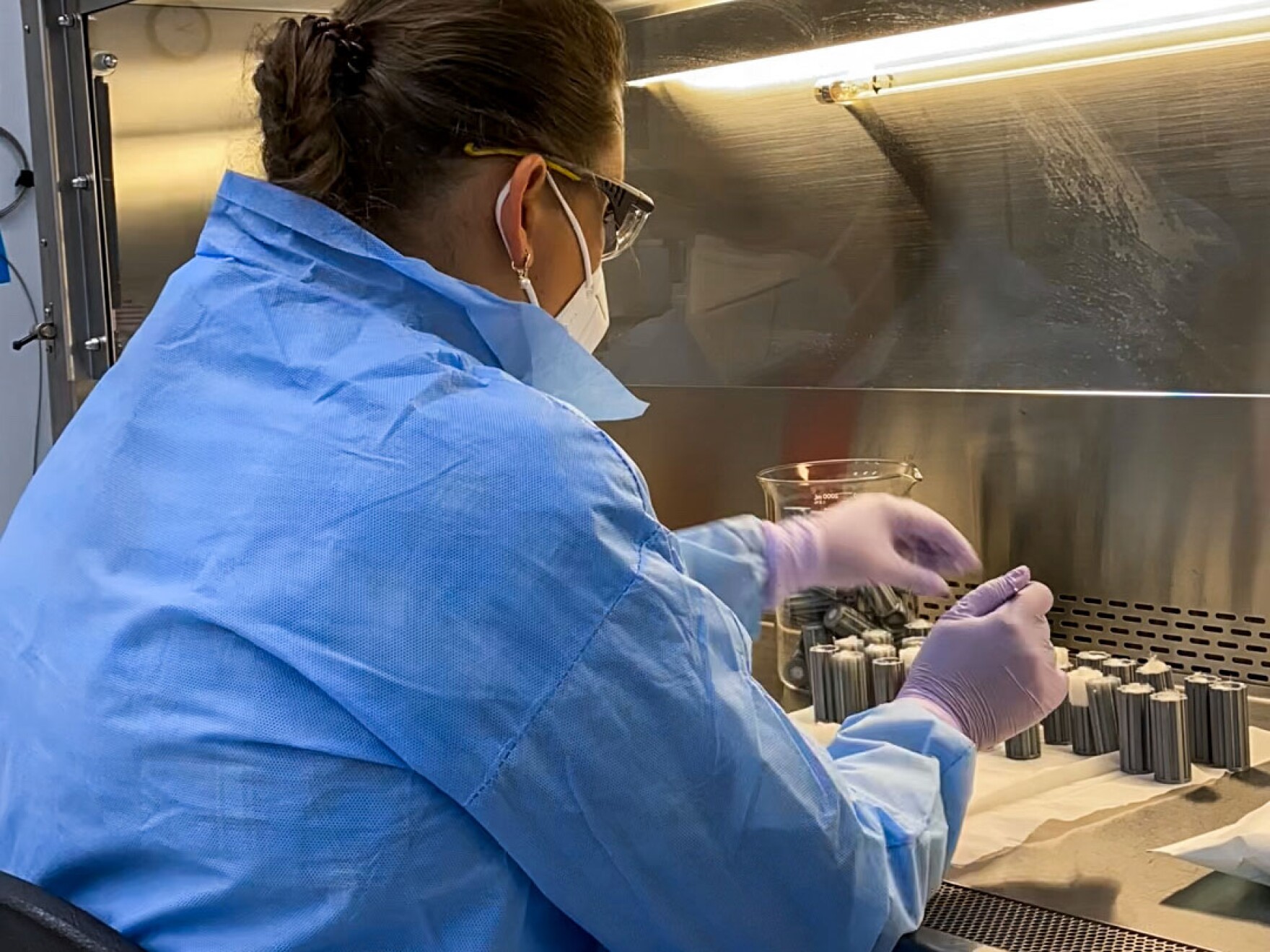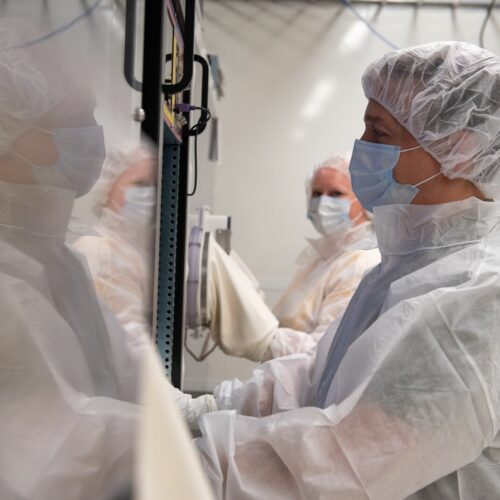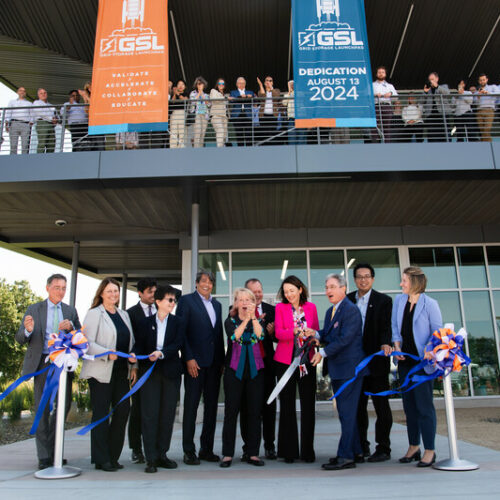If all goes according to plan, soil from Prosser, Washington, could end up in space next week.
The soil – and eight types of bacteria in the soil – will hitch a ride to the International Space Station as part of NASA’s SpaceX CRS-25 resupply mission for now planned to blast off June 10 at the Kennedy Space Center in Florida.
These beneficial bacteria, or soil microorganisms, could be key to growing food in space or on Mars or the moon, said Janet Jansson, a laboratory fellow at Pacific Northwest National Laboratory in Richland, Washington, and experiment lead.
“Soil microbes are the hidden players of life support systems on Earth,” Jansson said.
For example, she said, these microorganisms cycling carbon from the atmosphere, degrading pollutants in the soil, and supporting plant growth.
However, scientists still know very little about these microorganisms that carry out essential functions for life on Earth, Jansson said.
Even less is known about how the microorganisms will help plants grow in space, a key feeding astronauts on long-duration expeditions or cultivating food on the moon or Mars.
To answer some of those questions, scientists collected soil from a Prosser field in Washington’s Lower Yakima Valley. Then, they killed off all the thousands of microbes readily found in most soil samples.
“The native soil microbiome is very complex, with thousands of species and millions of interactions. So, we chose to start by focusing on eight species from a naturally evolved community to study,” said Ryan McClure, a scientist at Pacific Northwest National Laboratory.
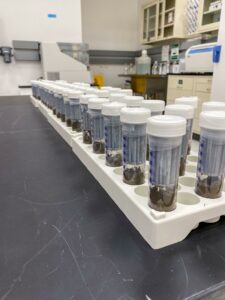
A rack of tubes contain different cultures of bacteria to be added to sterile soil for the Dynamics of the Microbiome in Space (DynaMoS) experiments. CREDIT: Pacific Northwest National Laboratory
Prior to launch, scientists will inoculate the soil with eight types of bacteria from the Prosser field that they’d like to study. Scientists plan to send 52 test tubes each packed with 20-grams of the soil to the Space Station.
After the soil heads to space, the scientists will perform the exact same experiment with 52 test tubes of the same soil on Earth. That way they can compare conditions on the Space Station and at home.
In space, the samples will experience microgravity, altered carbon dioxide levels, and radiation levels not found on Earth, Jansson said.
Scientists will incubate both soil experiments for up to three months.
Then, a SpaceX spacecraft will return the Space Station samples to Earth, said Kirt Costello, NASA’s chief scientist for the International Space Station program research office.
“SpaceX missions are specifically helpful in their ability to return samples developed in space to researchers on the ground for further analysis,” Costello said.
Once the samples return home via a refrigerated truck, scientists at Pacific Northwest National Laboratory will analyze the soil incubated in space to learn which microorganisms survived and how that differs from the Earth-bound samples.
With the ability to return samples, Costello said this upcoming SpaceX payload carries a significant number of biological experiments.
The upcoming SpaceX flight also will carry experiments to help study the effect of space dust on Earth; new ways to build a more space-friendly cement; how wounds and sutures heal in space; and how microgravity affects immune function.

